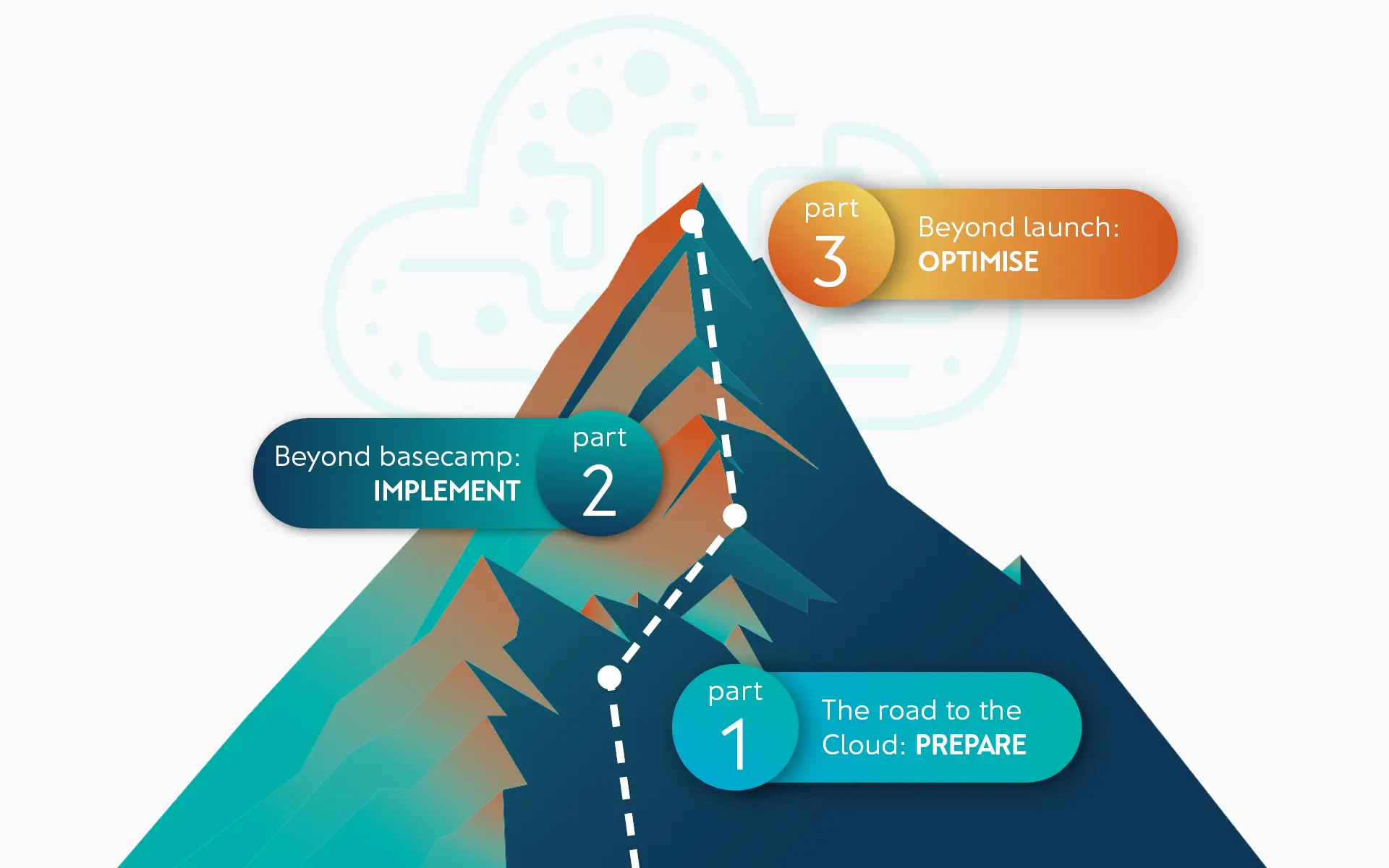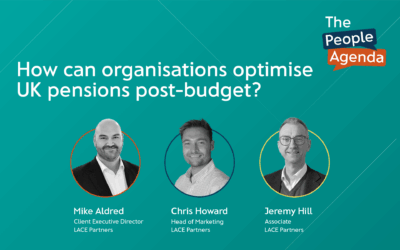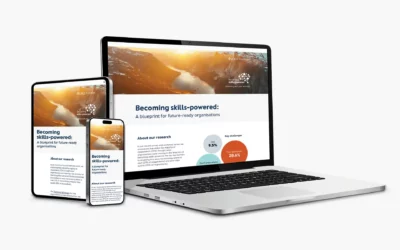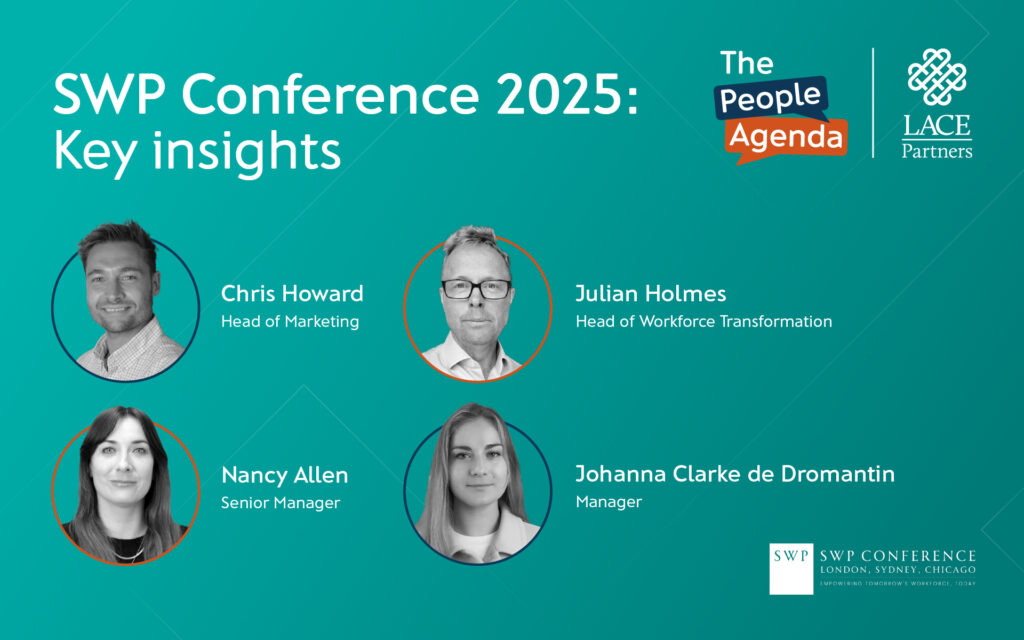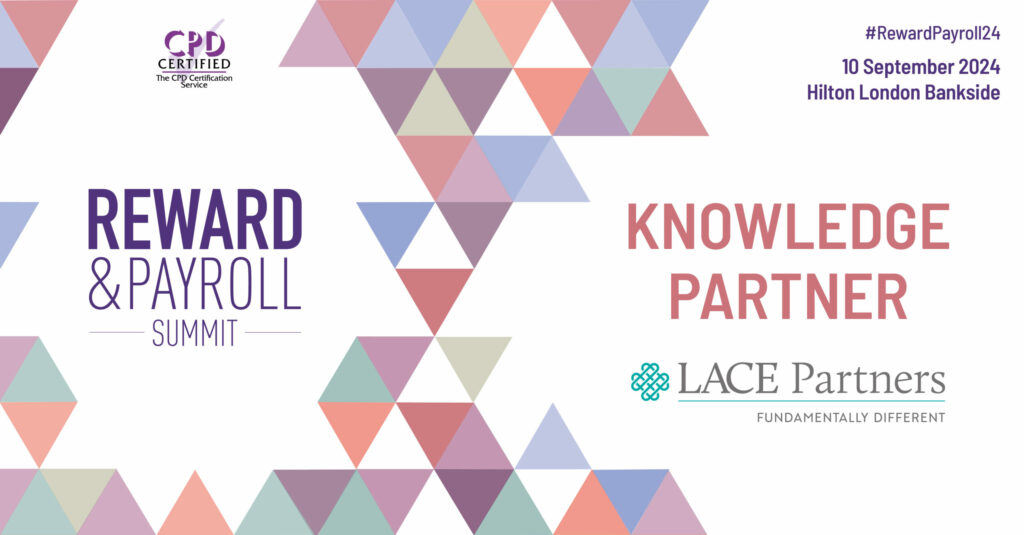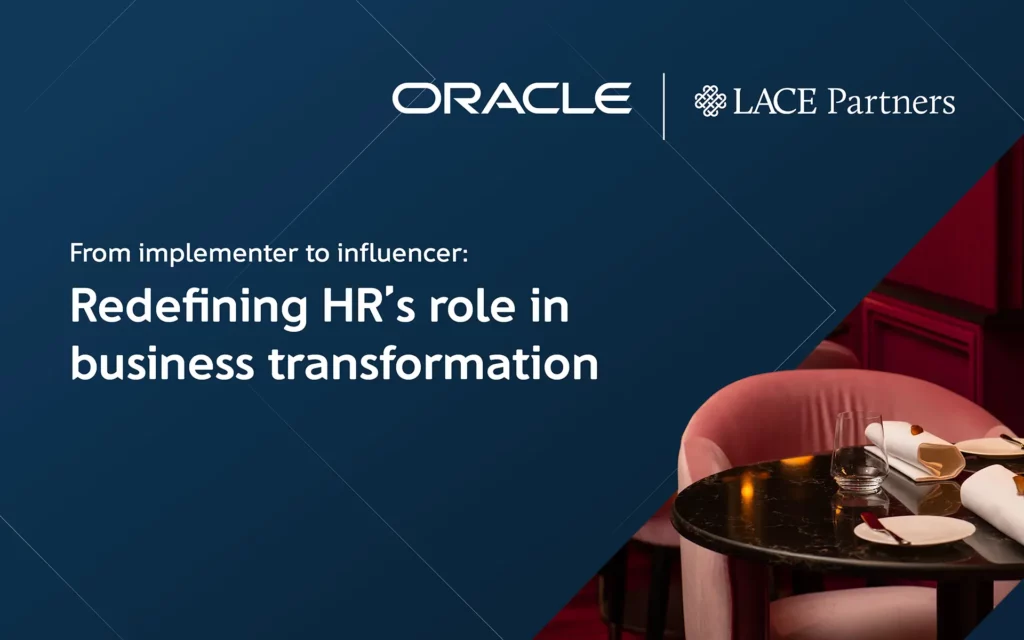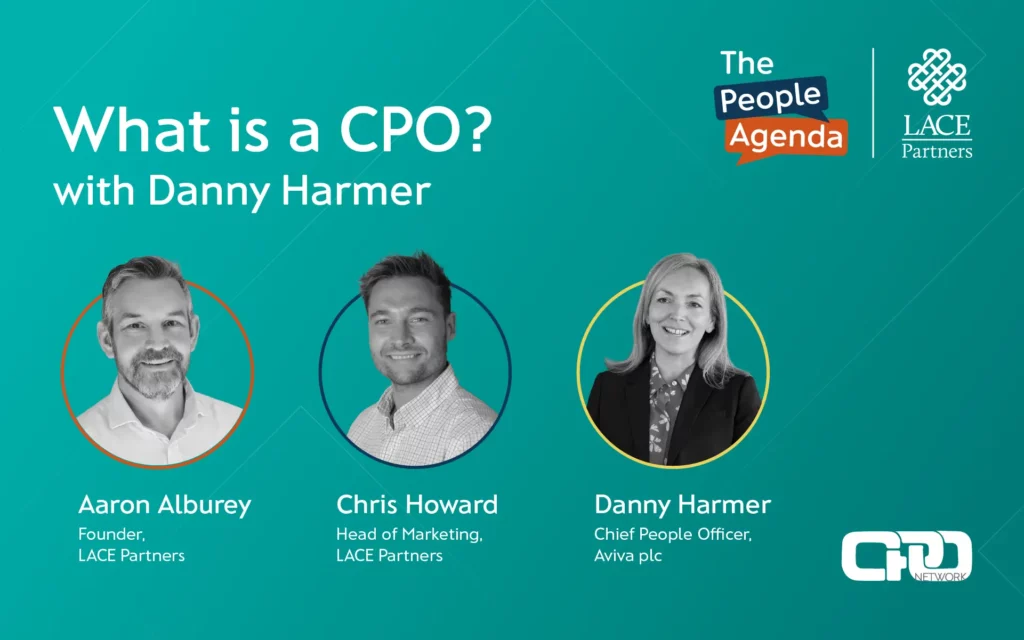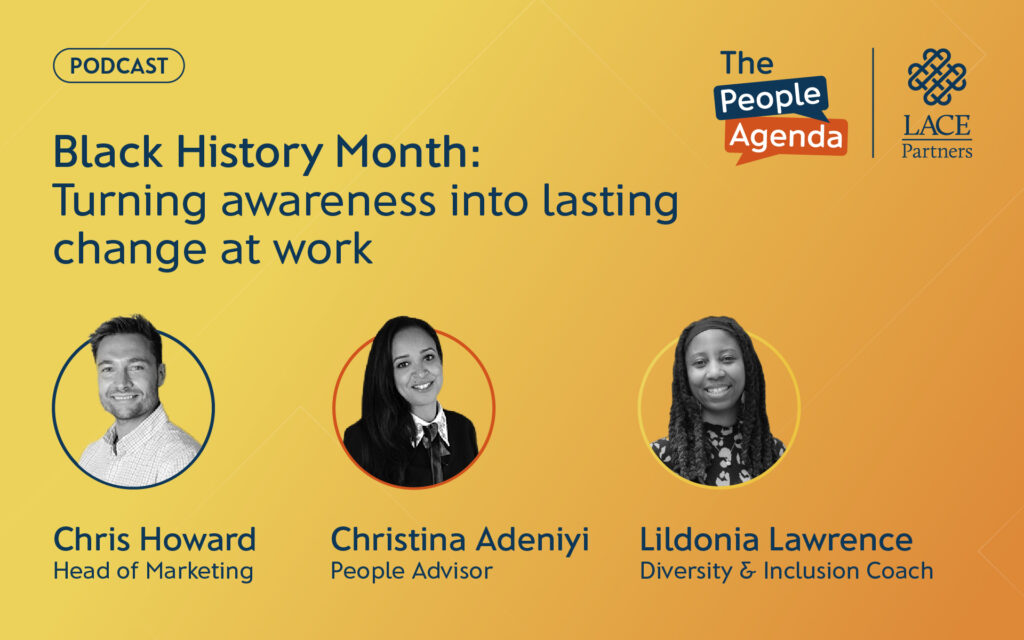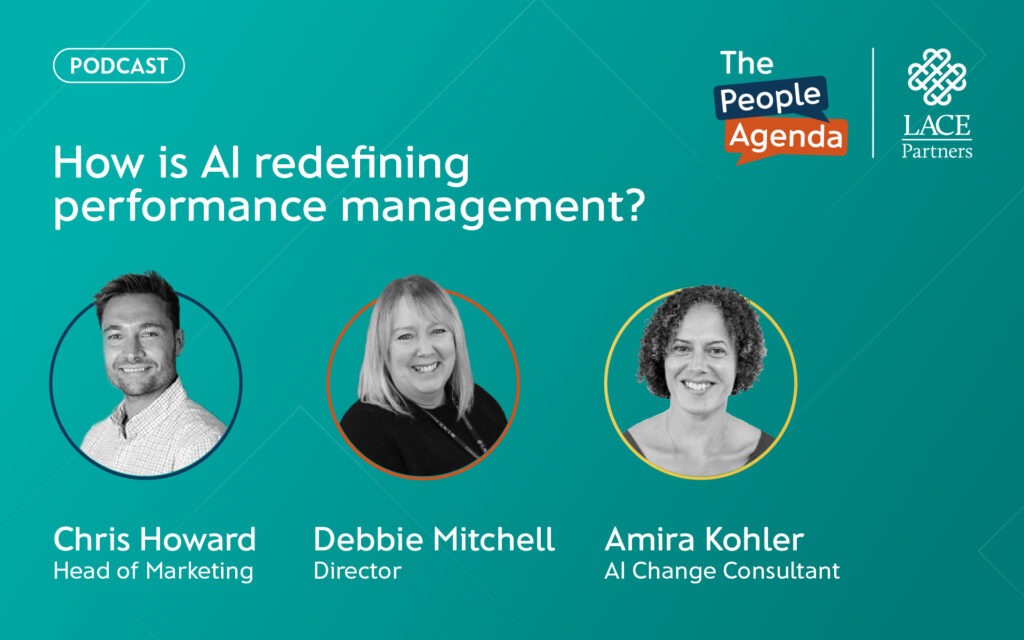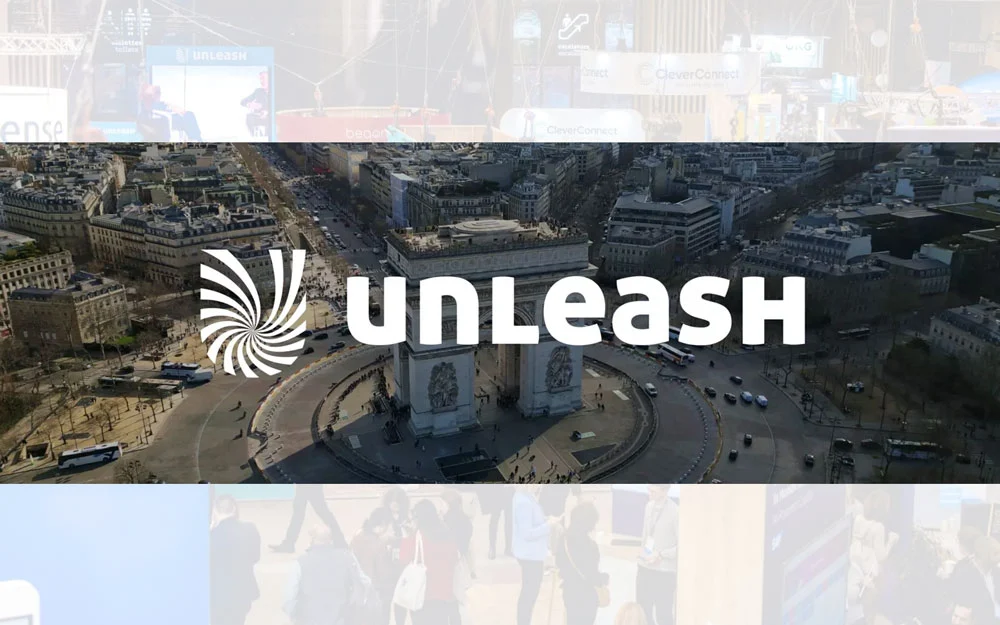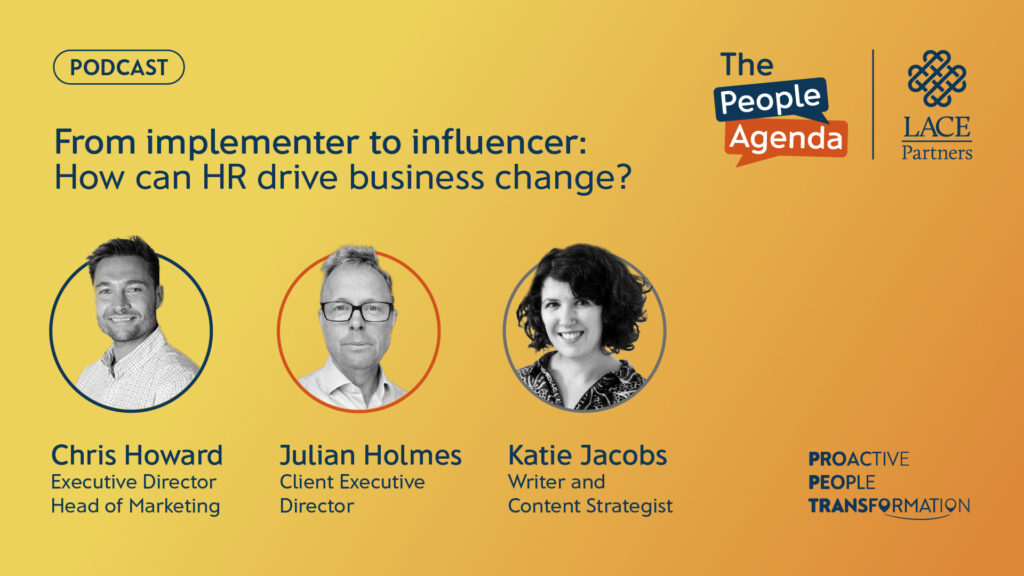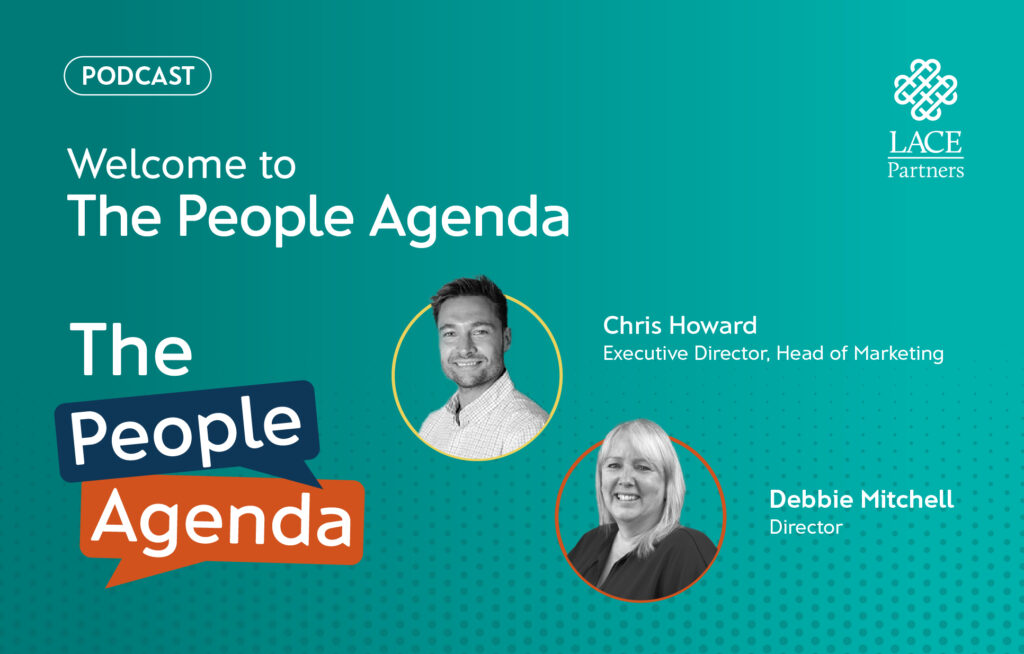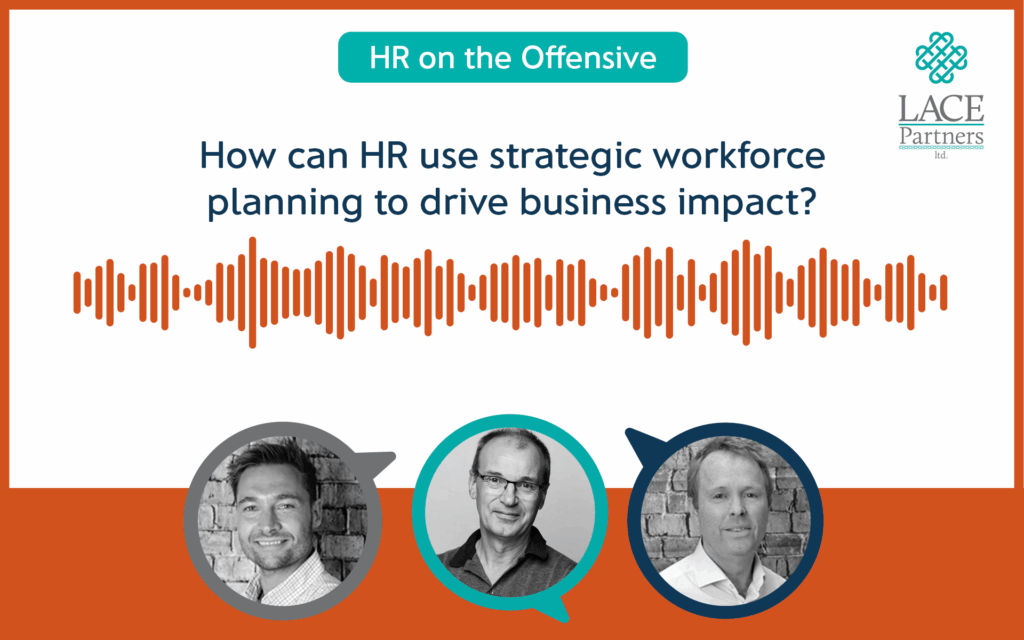Ahead of our third whitepaper in our Less stress HRIS series, Louise Brown – one of the authors of the upcoming third whitepaper in the series – gave us an overview of what is soon to come. She also recapped the overall journey that organisations go through, leveraging her own experiences working for large multinational organisations, to give an overview of the first and second whitepapers, which you can read and download below.
Our “Less Stress HRIS” series aims to address common challenges businesses face during HR technology implementation. From pre-implementation planning to the implementation process and post-implementation optimisation, we provide a comprehensive guide drawn from years of experience and diverse client projects, where our teams have worked both as consultants and in-house experts. To recap, we outline the journey organisations undertake: starting with initial planning (“we need a new system, but where do we begin?”), moving through implementation, and later optimising the system (as we’ll explore in coming weeks). We liken this process to “climbing a mountain,” a fitting metaphor for these three distinct phases.
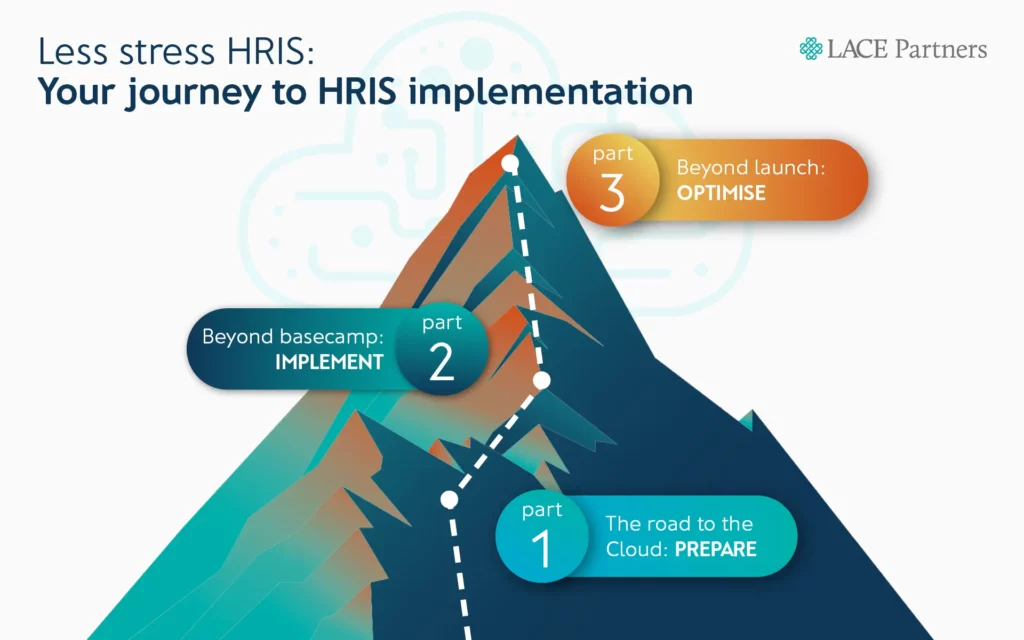
Stage one
This stage, the base of the mountain, focuses on the groundwork required before implementing a new HR technology system.
It includes key design decisions (KDDs), selecting the right technology partner, and preparing the organisation for change. We very much see it as the building blocks and giving you the tools you need to make sure you’ve ‘thought of everything’ before you make your selection decision. At this stage, the importance of building your value case is clear.
Check the first part of the HRIS journey here: Less stress HRIS part one: The road to the Cloud
In the first part, we mapped out what a value case is (we see it as differently to a business case, which is usually focused on the financial side of any justification on investment for a business), how to build a compelling and robust value case, then what you need to consider when choosing the right technology for your business, mapping it against your value case. This stage is a vital stage; you are building the foundations for a successful implementation, so getting this right is as important as building your plan and design foundations.
Stage two
During this phase, businesses execute the implementation plan, ensuring that the technology is integrated smoothly into daily operations.
It involves change management, training, and addressing any immediate challenges that arise. This is our ‘beyond basecamp’ stage, because you’ve got to an important part in your journey and you’ve got the fundamentals in place at phase zero, but there is still so much more to do to realise the true value of the system you are implementing.
Check part two of the HRIS journey here: Less stress HRIS part two: Beyond basecamp
This phase is about understanding the importance of the right structure and governance in place. Do you have clear accountability across the different functions and teams over who is responsible for what part of the implementation (HR? IT)? In phase zero change management is important, but it continues to play a vital role in implementation – does your workforce feel empowered to support the implementation and adopt the new ways of working?
There is always a need to get the right balance with any implementation, between the needs of the employees and the experience they have, the efficiency of the system, as well as enabling the business outcomes for which the programme was designed. Have you dedicated enough time to understanding the data, cleansing, migration approaches and usability of the system? Have you effectively mapped out the integrations landscape and what will change over time? These are just a few of the questions we ask in our second whitepaper.
And linked to data, there comes the reporting and analytics, which must take into account the business needs, which is something critical for benefits realisation.
At implementation phase, testing – and robust testing and quality assurance at that – guarantees the best possible user experience, then finally we look at the impact of the implementation and new technology on your target operating model – how do you develop the right model that will align the new system with your strategic business goals?
Stage three
The final phase is about fine-tuning the system to ensure it delivers the expected benefits. This involves continuous improvement, process optimisation, and leveraging data and insights to enhance performance.
Part three of the HRIS journey will launch next week; stay tuned!
Quite often when we’ve spoken to businesses who should be at this stage of optimisation and continuous improvement, the challenges they face are that the root causes of any issues have not been fully identified. This involves a thorough analysis of various aspects, including technology, change management, user experience, processes, data, operating model, and service delivery, which is how we have broken down our third and final whitepaper:
- Benefits realisation – Measuring and maximising the value of your system investment. This involves tracking key performance indicators, measuring return on investment, and ensuring that the system delivers the expected value to the business.
- Operating model – How to structure your People Function to deliver the technology and drive an effective Cloud Support Model. A well-defined operating model and efficient service delivery are critical for successful optimisation. This involves integrating HR technology into daily operations, defining roles and responsibilities, and ensuring that the system supports the overall business strategy.
- Process optimisation – Optimisation of processes to drive widespread user engagement. This includes further refining workflows, simplifying user interfaces, and ensuring that processes are efficient and user-friendly.
- Adoption – Embedding the system into everyday operations and ensuring continuous evolution – as with the first and second whitepaper, effective change management is crucial, ongoing training, communication, engagement with users to ensure they are comfortable with changes to the system and how it impacts them.
- Data and AI – Enhancing the power technology can provide and ensuring you leverage the full abilities of the data and AI capabilities available. High-quality data is the foundation of effective HR technology optimisation. Ensuring data integrity, conducting regular data audits, and leveraging data analytics to gain insights are essential steps in this process.
- Vendor partnership – Keeping pace with updates, upgrades, and ongoing support.
- Roadmap evolution and renewal planning – Measuring progress and refining your strategy and evaluating modules, licences, and strategic workforce alignment. This includes regular system updates, troubleshooting technical issues, and leveraging new features and functionalities provided by the vendor.
An ongoing journey
As somebody who has been involved in all three phases in my career so far, as well as joined businesses halfway through some of the phases, or had to step back phases due to challenging launches, I know how complex an HRIS implementation can be. At one organisation I was in we had already launched, but by not identifying the key design decision questions at the right stage, we had to take a step back and re-roll-out a technology of one of the tier one providers, because the role of the line manager had not been factored in. Bringing the line manager community along the change journey was not considered for them, the employees or the wider business. If you haven’t involved your line manager community, rolling out a ‘self-service’ approach will just result in lost hours, money and effort for all involved.
That’s just one example, but the complexities of a HRIS implementation involve so many nuances that if not completely thought through, result in needing to take those backward steps and run the risk of apathy sinking in amongst your employee community.
If you’d like to talk to Louise about your current HRIS project, or any member of the LACE team, fill out the form below and let us know what your challenges are and how you’d like our help.
Would you like to learn more about key design decisions (KDDs)?
Our team will be hosting an invitation-only, immersive event on Wednesday 16th July, which focuses on KDDs and the importance of getting your approach to KDDs right. It’s going to be held at a Cookery school and we’re looking for HRIS transformation programmes managers to reach out to us if you’d like to be considered for this invitation-only event. Contact adam.morris@lacepartners.com for more information.

